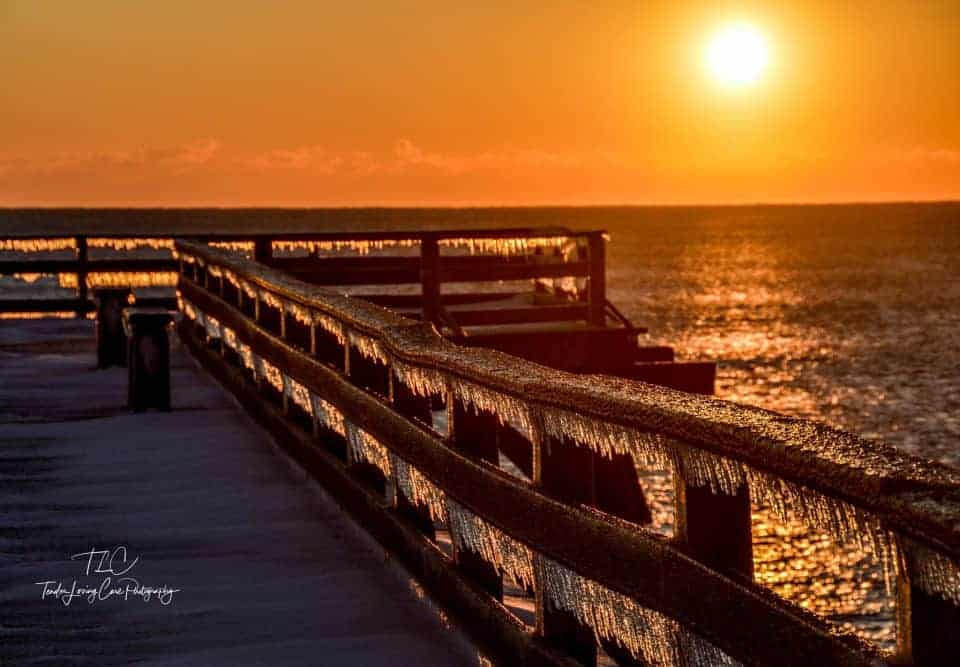Seasons Photography Ideas and Tips
When thinking about seasons photography ideas, remember the sun position changes with each season.
Since light is a basic photography technique for capturing landscapes, it’s important to know all about the light and other elements available during each season.

Be sure to use a variety of techniques to compose each photo so you’ll create a strong image with impact to the viewer.
Check out these tips to photograph the spring, summer, fall and winter seasons.
We hope the photo ideas below will inspire you to get out and capture your own images!
This site contains affiliate links which means WE may receive commissions for purchases made through these links. We only provide links to products we actually use and/or wholeheartedly recommend! As an Amazon Associate, we earn from qualifying purchases. Read the full Disclosure Policy.
Camera Gear for Landscape Photography
- Tripod: take a look at these compact and lightweight travel tripods!
- Camera Bag: protect your camera from sand and water → We use Lowepro camera backpacks for outdoor photography.
- Neutral density filter: to compensate for variance of light you’ll need to use a neutral density filter. → Check out the Kase magnetic filters we use!
- Camera cleaning kit: remove dust or water that WILL get on your lens. NOTE: this is not for cleaning the sensor.
- Memory cards: purchase name brand memory cards since you’re trusting your images to the card! → We use Lexar and Sandisk!
- External hard drive: copy photos to a portable external hard drive ‘just in case’.
- Headlamp: use when taking sunrise and sunset photos!
Photographing Seasons: Photo Ideas
Take a look at the seasons photo ideas shared by members of our Facebook Group, Your Photography Journey.
WATCH the video as we discuss seasonal elements in each image.
Examples of Seasonal Photography
In landscape photography, composition, light, subject and story make a good photograph.
Every season has it’s advantages and drawbacks. Learning to make the most of each season is important to photographing all year round.
Spring Photography
- Early spring sunlight is soft and low in the sky for longer in the day.
- Spring flowers will begin to appear.
- Wildlife, and animal babies, become more active in the spring.
- Cloud cover can be a natural diffuser.
- Astro photographers in the northern hemisphere can see the Milky Way.
- The weather can be unpredictable so check the weather forecast.
- Grasses and flowers look the most vibrant after rain.
- Dress for the weather and carry rain gear.
Spring Landscape Photography Gear
Summer Photography
- Warmer weather makes getting out more pleasant.
- Summer monsoons create potential for terrific weather photos!
- Trees will be in full leaf, creating shade or to be used to block the sun.
- High elevation summer wildflowers will bloom.
- The light is harsh for the majority the day. This light creates unflattering hard, dark shadows.
- Sunrise and sunset occur very early and very late in the day.
- Milky Way photography is in full swing during the summer.
Fall Photography
- Bright and vibrant colors for creative backgrounds and elements, but the colors are only vibrant for about 2-3 weeks.
- The sun is low in the sky so the light is nice most of the day. Trees still provide enough shade for the brighter moments.
- Leaves on the ground give pops of color when you use perspective to shoot high and low.
- The weather is still warm enough to spend time outdoors.
- Migratory birds and wildlife are active preparing for the winter.
- The days start to become much shorter which means sunrise and sunset aren’t so early or late. But it does limit the opportunities for daytime photography.
- The weather becomes more unpredictable so check the weather forecast and dress for the conditions and protect your camera gear from rain..
- The Milky Way is no longer in it’s best position for the northern hemisphere, but it’s still visible.
Winter Photography
- Winter transforms the landscape with snow, ice and frost.
- Sunrise is much later in the morning, and sunset is very early which is nice for good light photography.
- The sun is much lower in the sky all day, providing less harsh light at any time.
- There is little to no haze on a clear day which is good for deep landscape scenes.
- It’s cold so wear warm and protective clothing so you’ll want to be out taking pictures!
- Take extra care with your camera. Avoid sudden temperature changes when moving from the cold to a hot car or room that can cause condensation in your equipment. Let your camera acclimatize inside your bag before taking it out.
Spring Photography Ideas
Green foliage and waterfalls are abundant in the spring.
Alfredo Cruz captured this photo at Yosemite National Park that showcases the green foreground, the midground with a waterfall and the background with the snow-capped mountains and cloudy sky.

Using layers in this image provides depth as the viewer’s eye moves through the landscape.
Roy Goldsberry also uses foreground, midground and background in this spring photo.
The spring wildflowers ground the viewer. The ocean is the midpoint with the cloudy sky as the background.

He also captured a long exposure of the moving water AND the moving clouds. Don’t forget to use long exposure when clouds are moving in the sky.
Spring is a time of new growth, and some of that may escape your eye if you’re not looking for it!

Paul Fiscus got low to the ground to capture this photo of three mushrooms.
By filling the frame and using a low perspective, he created immediate interest for the viewer!
Summer Photography Ideas
Summer is the time for travel and outdoor fun.
In this photo by Mel Simpson, she captured summer elements with water, blue skies and a summertime activity.

The bright colored kayaks draw the viewer right in, and the trees are lines that lead the eye through the rest of the photo.
Going to the beach is another summertime activity that’s illustrated in the photo below by Tina Brasington.

Tina has captured the various elements of the beach to compose this photo: shell, sand, water bubbles, ocean waves and blue skies.
The biggest impact in the photo is the low perspective which provides a different view from what you typically see when you’re at the beach.
Monsoons and stormy weather are common in the summer.
Roxy Laschanzky captured this amazing photo of lightning!

The dark framing effect draws the eye right to the lightning bolts in the middle of the photo.
Check out tips for photographing lightning.
Fall Photography Ideas
Autumn is all about color and capturing the yellows, oranges and reds in the foliage.
Look at this amazing fall image taken by Frank Preston.
The composition draws you right in and invites you to sit on the sunlit bench!

The vertical orientation of the photo is perfect for this intimate fall scene!
Blue skies are the perfect backdrop to showcase colorful fall leaves.
Jeff Hall tilted his camera to look UP to capture this amazing photo.

Taking pictures of objects using a different perspective from what you see every day provides immediate interest and impact!
But that doesn’t mean you don’t ever take photos of a typical view.
This image by Ghe Buhay is looking down at leaves on the ground.

What makes this a terrific photo is how he filled the frame with the leaves. By getting close on just a part of the whole scene, he has created interest and impact.
Winter Photography Ideas
Winter usually means snow, ice and fog.
This photo by Denise Thomason showcases a winter wonderland.

We love the contrast of dark and light elements in this picture. And the fence is a nice leading line through the photo.
Ice is a wonderful element that indicates cold temperatures.
Look at this fantastic shot by Terri Chabot where the golden light is showcased in the sky, on the water and through the icicles!

The use of leading lines and patterns of the icicles create interest for the viewer to lead the eye through the image.
Seeing snow in a location where you wouldn’t expect it also creates immediate interest, as seen in this photo taken by Daphne Brislin.

There’s a beauty in the red landscape at Monument Valley contrasting with the white snow.







